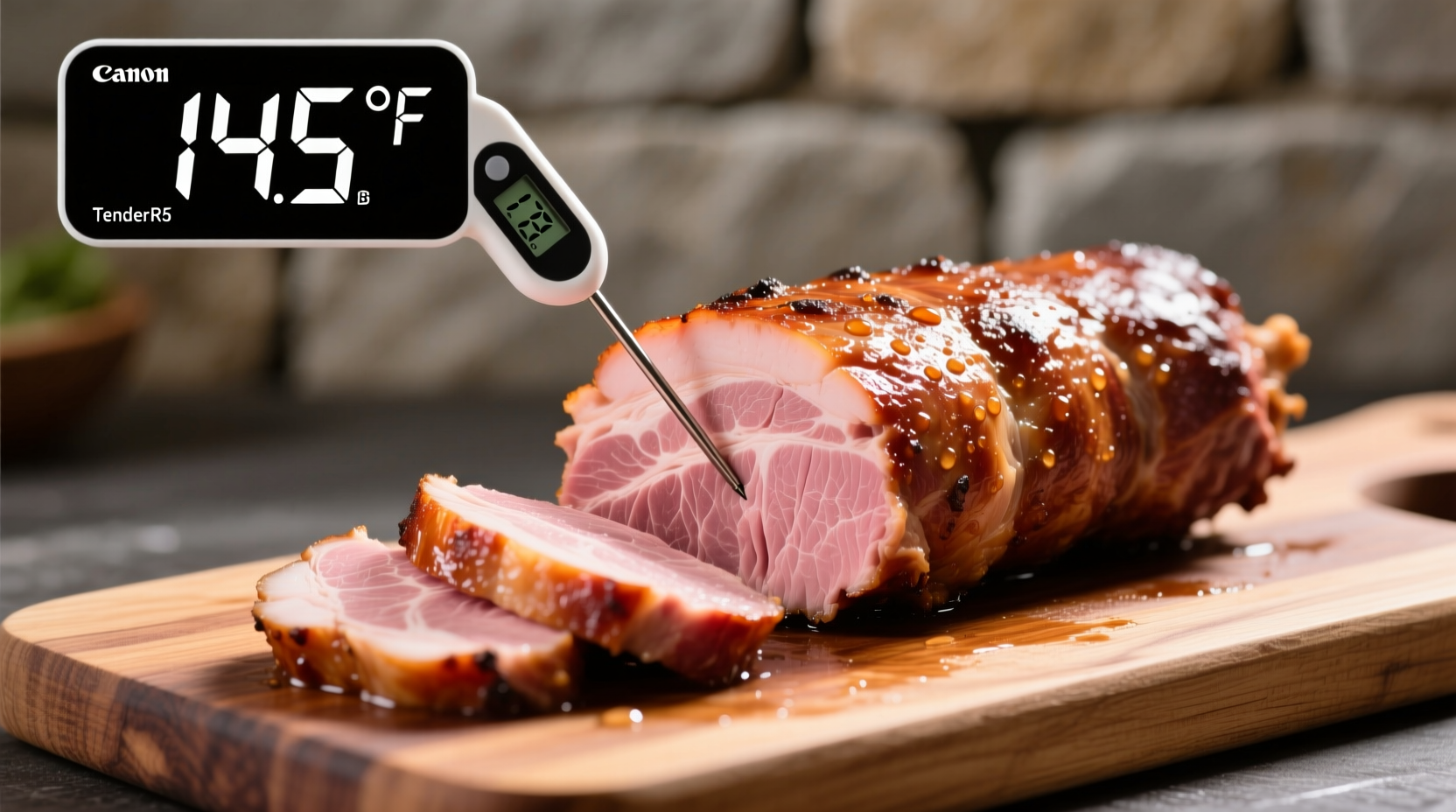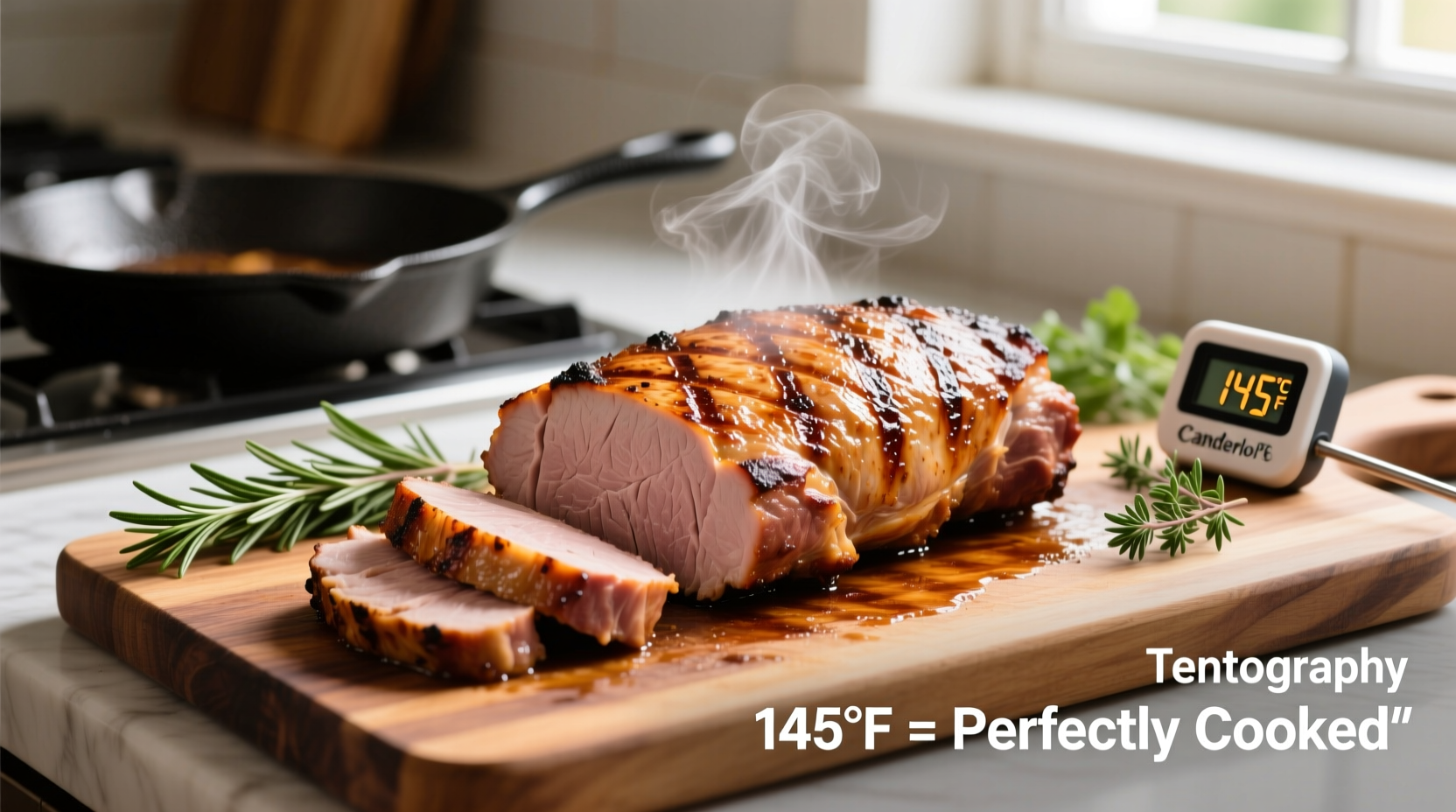Nothing ruins a special dinner faster than overcooked, dry pork tenderloin or the risk of undercooked meat. Getting the timing right transforms this lean cut from potentially tough to tender and juicy. As a culinary professional who's taught thousands of home cooks, I've seen how precise timing combined with temperature monitoring creates consistently delicious results.
Why Temperature Matters More Than Time
Pork tenderloin's thickness varies significantly between cuts, making fixed cooking times unreliable. The USDA Food Safety and Inspection Service confirms that 145°F internal temperature with 3-minute rest is the safe minimum for whole pork cuts. This standard, established in 2011, replaced previous higher temperature recommendations after research showed this lower temperature effectively eliminates pathogens while preserving moisture.
| Cooking Method | Approximate Time | Target Temperature | Rest Time |
|---|---|---|---|
| Oven Roasting (400°F) | 20-25 minutes | 145°F | 3 minutes |
| Grilling (medium heat) | 15-20 minutes | 145°F | 5 minutes |
| Pan-Seared then Finished in Oven | 8-10 minutes sear + 10-15 minutes oven | 145°F | 5 minutes |
| Sous Vide | 1-2 hours | 135-145°F | None required |
This cooking time comparison comes directly from the USDA Food Safety and Inspection Service guidelines, which represent the most current food safety standards for home cooking.
Step-by-Step Cooking Guide for Perfect Pork Tenderloin
Preparation Essentials
Before heating your oven, proper preparation sets the stage for success:
- Bring to room temperature: Remove pork from refrigerator 30 minutes before cooking
- Dry the surface: Pat thoroughly with paper towels for better searing
- Season generously: Salt penetrates best when applied early
- Preheat oven accurately: Use an oven thermometer to verify 400°F setting

Oven Roasting Method (Most Reliable for Beginners)
This foolproof technique delivers consistent results:
- Preheat oven to 400°F (204°C) with rack positioned in center
- Place tenderloin on a rack in a roasting pan or cast-iron skillet
- Insert oven-safe meat thermometer into thickest part
- Roast for 20-25 minutes until thermometer reads 140°F
- Remove from oven (temperature will rise 5° during rest)
- Rest covered loosely with foil for 3 minutes
- Slice against the grain into 1/2-inch medallions
Context Boundaries: When Standard Times Don't Apply
Several factors require adjusting standard cooking times:
- Thickness variation: Tenderloins under 1.5 inches may cook in 15-18 minutes
- Oven accuracy: Inexpensive ovens often vary by ±25°F from set temperature
- Starting temperature: Chilled meat straight from fridge needs 5-7 extra minutes
- Multiple tenderloins: Cooking two requires 25-30 minutes due to heat displacement
Food safety researcher Dr. Elizabeth Boyle from Kansas State University emphasizes: "The only reliable method for determining pork doneness is using a calibrated meat thermometer. Visual cues and cooking times provide guidance, but temperature verification is essential for both safety and quality."
Avoiding Common Cooking Mistakes
Even experienced cooks make these preventable errors:
Overcooking: The #1 Problem
Pork tenderloin contains almost no fat, so exceeding 145°F causes rapid moisture loss. At 160°F, it becomes noticeably dry; at 170°F, it turns tough and stringy. Set your thermometer alarm at 140°F to prevent overshooting during carryover cooking.
Skipping the Rest Period
That critical 3-minute rest allows juices to redistribute. Cutting immediately causes precious moisture to spill onto your cutting board rather than staying in the meat. This isn't just chef folklore—food science confirms proteins continue cooking and retaining moisture during this period.
Inconsistent Thickness Issues
Tapered tenderloins cook unevenly. Professional chefs solve this by:
- Tying with kitchen twine to create uniform diameter
- Folding the thin end underneath and securing with toothpicks
- Starting with thin end away from heat source in oven
How to Verify Perfect Doneness
While thermometers provide definitive results, these secondary indicators confirm proper cooking:
- Texture test: Properly cooked pork yields slightly when pressed but springs back
- Juice color: Clear or faintly pink juices (not red)
- Meat separation: Tenderloin pulls slightly away from any attached fat cap
Remember that slight pinkness at 145°F is perfectly safe and desirable. The National Pork Board's research shows consumers consistently prefer pork cooked to 145°F over higher temperatures due to superior moisture retention.
Pro Tips for Flavor Enhancement
Timing ensures safety and texture, but these techniques maximize flavor:
- Apply high-heat sear before roasting for better crust development
- Use a meat thermometer with wireless remote to avoid oven opening
- Let salt penetrate by seasoning 2 hours before cooking
- Add aromatics like garlic and rosemary to the roasting pan











 浙公网安备
33010002000092号
浙公网安备
33010002000092号 浙B2-20120091-4
浙B2-20120091-4